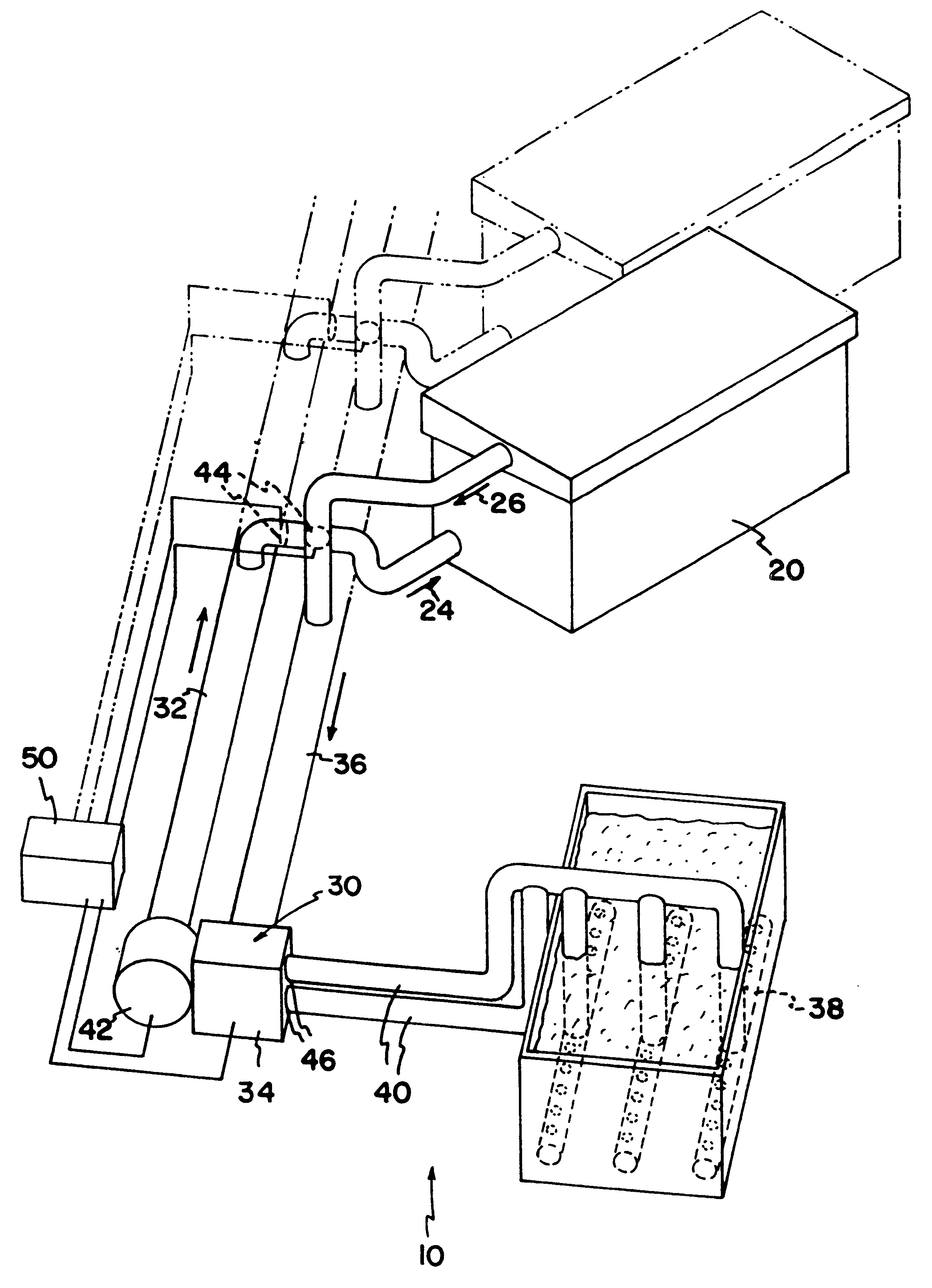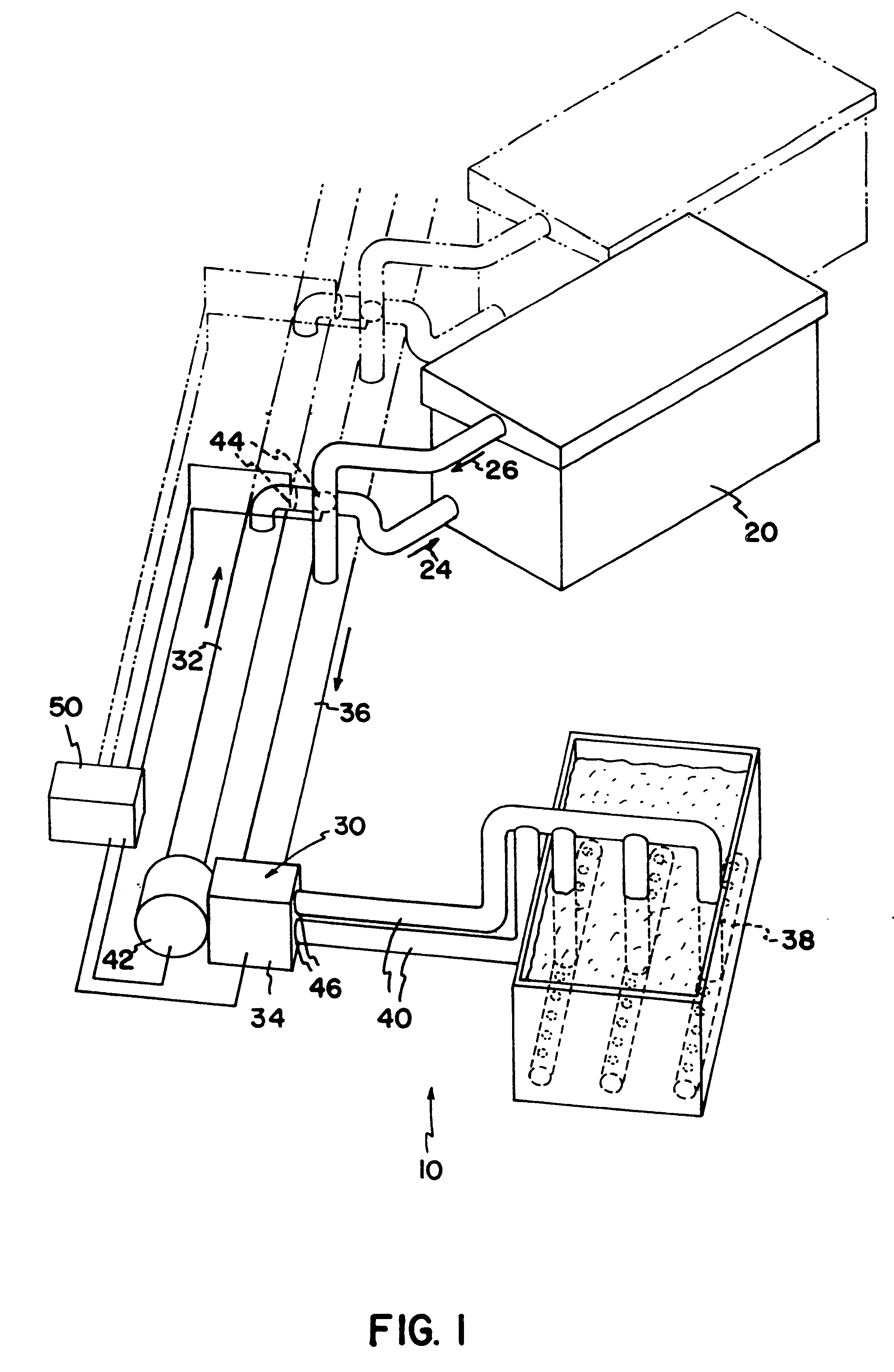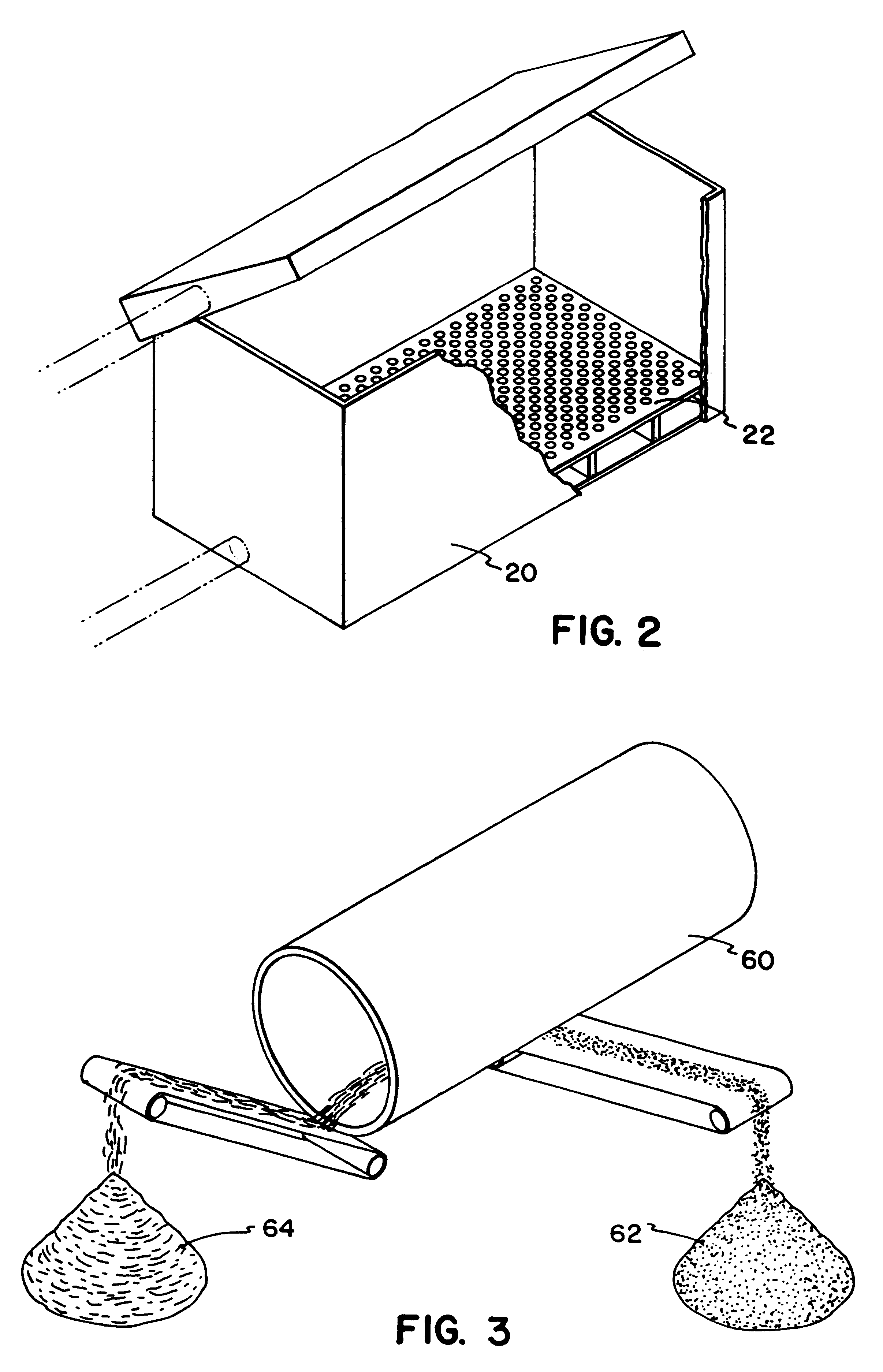Process for controlled composting of organic material and for bioremediating soils
a technology of organic material and bioremediation soil, which is applied in the direction of bio-water/sewage treatment, biomass after-treatment, fertiliser treatment control, etc., can solve the problems of noxious odor escape, complex disposal of solids from waste water treatment, and dwindling landfill space, so as to prevent the escape of noxious odors
- Summary
- Abstract
- Description
- Claims
- Application Information
AI Technical Summary
Benefits of technology
Problems solved by technology
Method used
Image
Examples
first embodiment
a system according to the invention can be used in highly populated or urban areas, or other areas where space is limited. This system can be placed in small areas, for example at community nature centers or recycling stations. The area needed is generally about 3000 square feet per ton per day of processing capacity. This system generally includes at least one sealable container having a volume of approximately one cubic yard, an air management system to move air through the sealable container, and a dumping system, for example a stationary or mobile tipper. Any biofilter or curing bin should be approximately the same size as the sealable containers. Construction equipment known under the common name "Bobcat" are ideal for such transporting the container or biofilter in such a system.
second embodiment
A second embodiment is for larger areas, for example, municipal composting and recycling stations, waste handling stations, abandoned railroad yards, desert flats, and other such areas. The area generally needed is about 1 to about 20 acres. This system generally includes a plurality of sealable containers, typically about 4 to about 200 containers, each container generally having a volume from 20 to 80 cubic yards, preferably 40 cubic yards. The system can further include a biofilter and, optionally, at least one curing bin, each biofilter or curing bin preferably with a 20 cubic yard volume. Containers particularly suited for this embodiment include roll-off garbage, rubbish or construction containers. Typically, one end of the container has wheels thereon, thereby allowing the container to be easily moved if the opposite end is picked up. A transport system for this system can include equipment such as a roll-off truck with a winch, a larger fork truck or front-end loader, or oth...
third embodiment
A third embodiment is designed for extensive areas, typically about 10 to about 1000 acres. Such areas include abandoned railroad yards and ports. This system generally includes between about 40 to about 2000 sealable containers, at least one biofilter and, optionally, a plurality of curing bins. The sealable containers, biofilter, and curing bins are preferably intermodal containers. Intermodal containers are stackable and are designed to be transported by truck, railroad, or on large ocean going vessels and typically have a volume from about 40 to 120 cubic yards, preferably 80 cubic yards. These intermodal containers are generally moved by a large overhead crane or oversize wheel loader and can be dumped by a stationary or mobile tipper.
Although three specific embodiments of systems have been provided, other sized containers and dumping systems can be designed to provide a system suited for a particular location and composting need.
PUM
 Login to View More
Login to View More Abstract
Description
Claims
Application Information
 Login to View More
Login to View More - R&D
- Intellectual Property
- Life Sciences
- Materials
- Tech Scout
- Unparalleled Data Quality
- Higher Quality Content
- 60% Fewer Hallucinations
Browse by: Latest US Patents, China's latest patents, Technical Efficacy Thesaurus, Application Domain, Technology Topic, Popular Technical Reports.
© 2025 PatSnap. All rights reserved.Legal|Privacy policy|Modern Slavery Act Transparency Statement|Sitemap|About US| Contact US: help@patsnap.com



